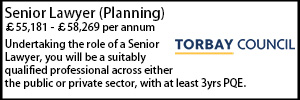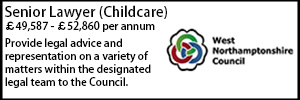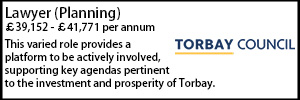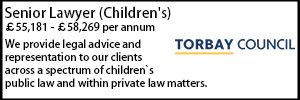Making final determinations in the Court of Protection
- Details
Clare Middleton analyses a Court of Protection judgment concerning an important decision taken at a procedural hearing.
On 14 February 2024 Mrs Justice Arbuthnot handed down a judgment in a case in which we acted for our shareholder client, Cambridgeshire County Council.
The case of VT v NHS Cambridgeshire And Peterborough Integrated Care Board & Anor [2024] EWHC 294 (Fam) concerned VT with the proceedings initially having been brought on behalf of our client for best interest decisions to be made around how best to meet VT’s care and support needs. As time progressed the Official Solicitor accepted the invitation to act as VT’s litigation friend and appointed solicitors to act on VT’s behalf. Due to a change in funding arrangements, the Integrated Care Board (‘ICB’) were joined as a party at a later stage.
An issue arose in that it was not until pre-hearing discussions on the day of the directions hearing that parties became aware of the ICB’s intention to apply to treat the directions hearing as a final hearing. This application was not supported by any of the other parties and was made against a backdrop of VT having expressed a wish to return to her home, where she had lived for a long period of time, and there being the potential for privately funded care. The ICB’s application was successful.
By way of summary, VT’s legal representatives brought an appeal against the Circuit Judge’s (‘CJ’) decision to use the directions hearing as a final hearing at which final directions were made.
The judgment
Arbuthnot J’s judgment is likely to be valuable to Court of Protection practitioners as it is a reminder of the importance of both evidence and procedure in this ever-pressurised area of law.
Arbuthnot J said the following:
24. The Court of Protection Rules 2017 set out the overriding objective. This includes dealing with a case justly and at proportionate cost. Any case should be dealt with expeditiously and fairly, so far as it is practicable, ensuring that P’s interests are properly considered. Any case should be dealt with in proportion to the nature of the issues.
25.The Court has a duty to actively manage cases on its own initiative or on application by a party. Active case management allows the Court to consider the appropriate pathway for the case. Courts are to ensure that delay is avoided and costs are kept down. The Court is to decide promptly which “issues need a full investigation and hearing and which do not”. The Court is enjoined to take a proportionate approach to the issues. The Court should deal with as many aspects of the case as the court can on the same occasion.
Whilst being mindful that the Court must take a proportionate approach to the issues, the judgment goes on to give helpful guidance on how to approach making a final determination as set out below:
34. It plainly is possible for the Court of Protection to:
a. decide matters of its own motion;
b. decide which issues need a full investigation and hearing and which do not;
c. exclude any issue from consideration; and
d. determine a case summarily of its own motion.
35. In any cases where such powers are contemplated, at a stage where the determination would dispose of the case, two matters will need to be given careful consideration:
a. Whether the court has sufficient information to make the determination (per Hayden J “curtailing, restricting or depriving any adult of such a fundamental freedom will always require cogent evidence and proper enquiry” paragraph 33 CB supra); and
b. Whether the determination can be reached in a procedurally fair manner.
As with most things, context is key and as set out in the judgment “The requirements of procedural fairness are not set in stone; the requirements are informed by context”. It could therefore be possible for a directions hearing to be converted to a final hearing if the situation allowed for this.
40. In allowing VT’s appeal, I determined that the CJ reached a decision which was not properly open to them. The section 49 report was not available and it was not appropriate for the CJ to make a decision on capacity when the CJ could only say that it was “fairly clear” from other evidence that VT lacked it. The decision as to best interests was contested properly by those acting on behalf of VT and CCC and was taken without permitting adequate exploration of the reasons why alternative options were not open to VT.
41. In short, in this case, the CJ reached decisions which, in principle, were possible, but which were not sustainable on the material before the court. VT’s interests were not properly considered. In the circumstances, it was not appropriate to reach such an important decision for VT based on submissions. The effect of the decisions taken were to deprive VT of a fundamental freedom. The decisions were taken without the cogent evidence required and in a procedurally unfair manner.
Reflections
As the Solicitor representing the Local Authority at the hearing which gave rise to the appeal, I found it very valuable to be able to be involved in the appeal throughout. Appeals within the Court of Protection are not very common in my experience and often the most valuable experiences come from when things have not gone quite right or as anticipated. This is one such time and I certainly learnt from the process and reflected on my own case management as a result. It is sometimes the case that Court of Protection matters develop at a pace meaning all practitioners need to think on their feet and pivot from a planned course of action and it is right that the Court is also able to do so – I think it unlikely anyone would want the Court to be overly rigid in approach. However, there should be an appropriate element of fairness for P and other parties when this happens. Likewise, it may not always be possible to achieve the outcome that accords with P’s wishes and feelings. How a decision is reached, in my view, is as important as what the decision is.
Clare Middleton is a Senior Lawyer at Pathfinder Legal Services.





























